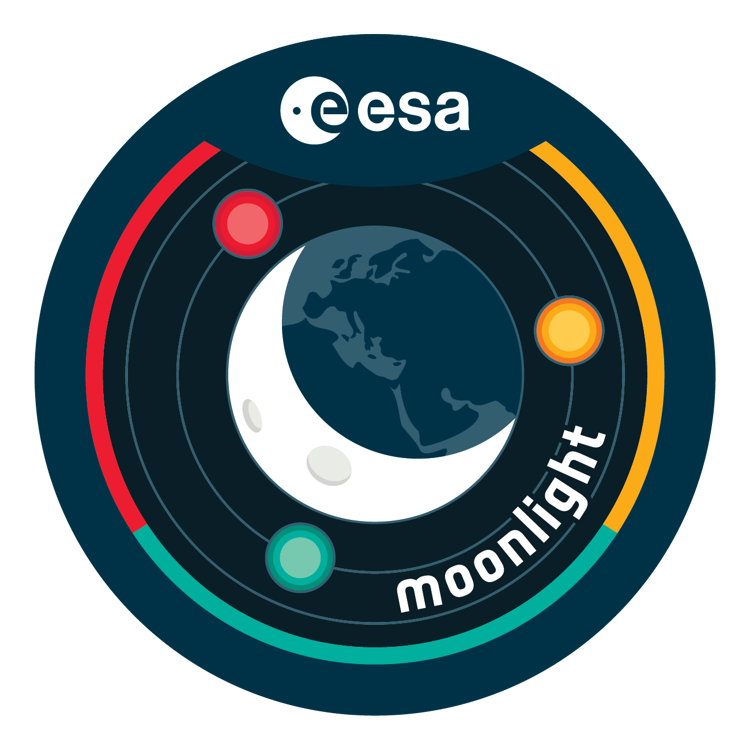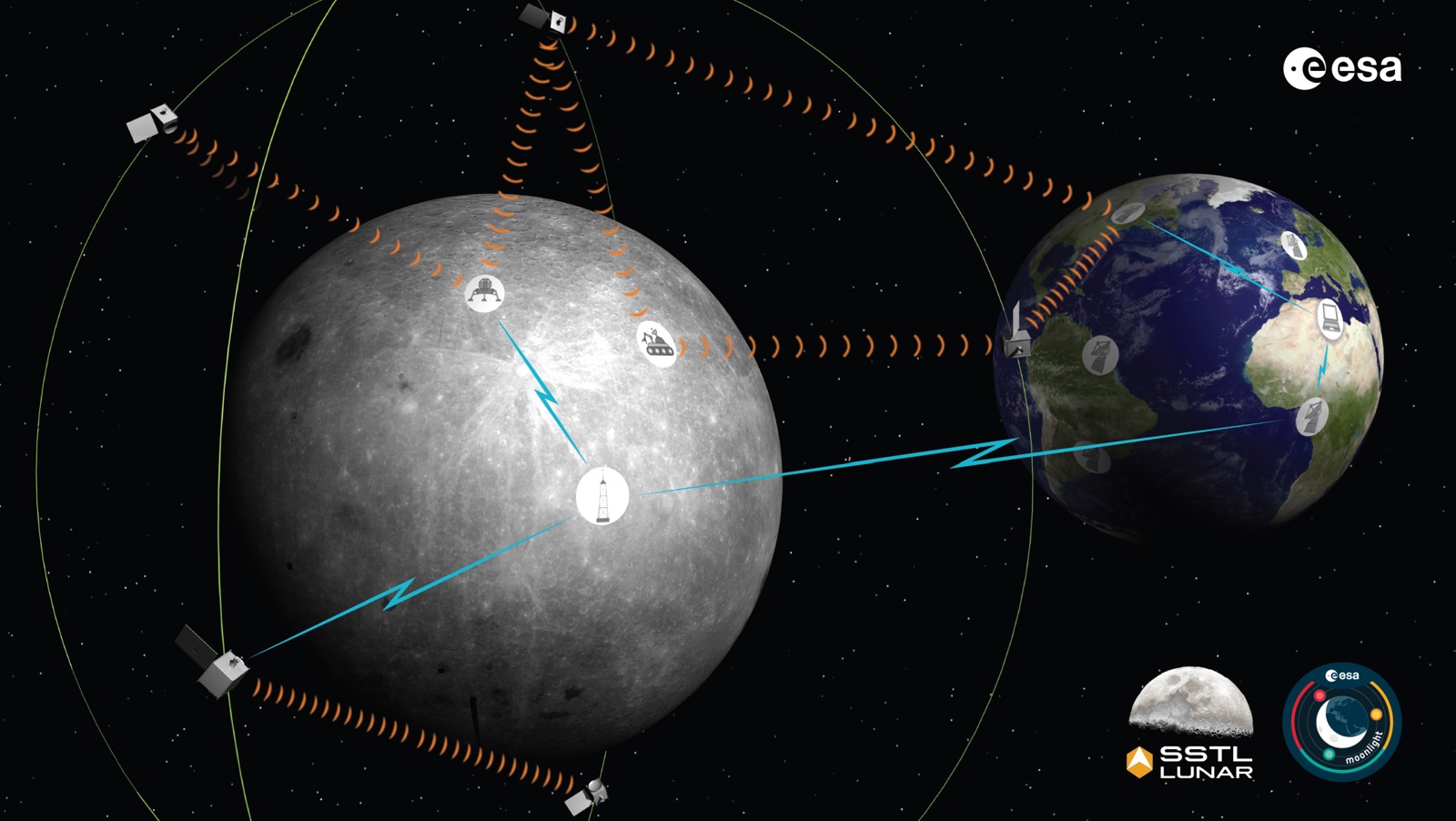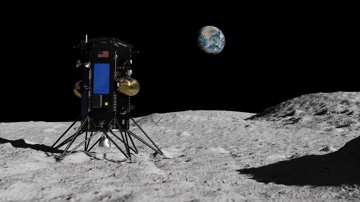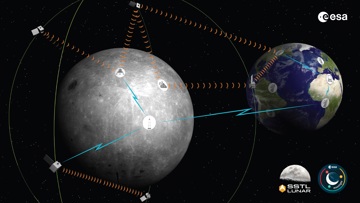Surrey Satellite Technology Ltd (SSTL) was last year selected by the European Space Agency (ESA) to lead a Phase A/B1 Competitive Study under ESA's Moonlight initiative to provide sustainable commercial lunar data-relay services for communication and navigation around the Moon. Now the work has started, and the study is planned to go on until July 2023.
Leading design and planning
It is a commercial partnership with an industrial consortium to set up an infrastructure to offer lunar communication and navigation services on a commercial basis. Within the consortium, KSAT is leading the design and planning of the Earth ground segment, in collaboration with UK’s Goonhilly Earth Station.
– The lunar poles are unique environments and compelling regions for future exploration of the Moon. Permanently shadowed areas on the poles contain large amounts of water ice, which would be key to sustain long-term human presence. More than 100 missions to the Moon are expected to take place in the coming decade or so. Many of these are going to the poles and the far side. We are excited and proud to be part of this initiative that could ultimately enable these missions, says Francisco Periales, lead on lunar activities at KSAT.

Enables surface missions to poles and far side
A constellation of interconnected lunar orbiters will enable surface missions operating on the lunar poles and the far side of the Moon, regions without direct to Earth line of sight, to keep constant contact with Earth. The constellation will likely consist of three or four satellites around the Moon.
These satellites will also provide lunar navigation signals to support critical mission phases such as precision landing of scientific equipment, and the operation of rovers, among others. ESA is going to the Moon together with its international partners, including NASA, and there are also many other international, institutional and commercial teams planning lunar missions.
The Moonlight Phase A/B1 Study will define the service infrastructure and clearly lay out the development path for a constellation of lunar communication and navigation satellites. The Study will characterise the complete end to end system, including the Lunar Space Segment, the Moon Surface Segment, the Lunar User Segment and the Earth Ground Segment.


